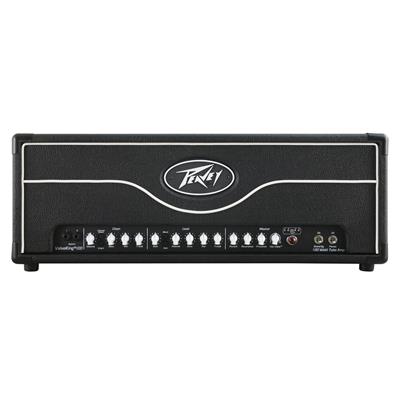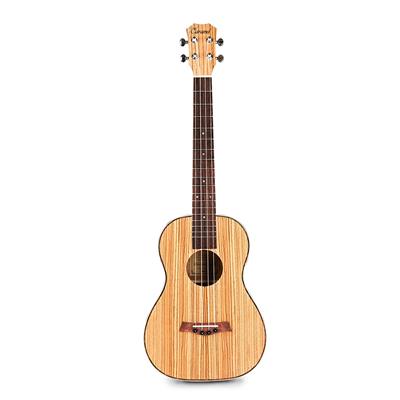| Build Quality: |  |
| Hardware: |  |
| Electronics: |  |
| Sound: |  |
| Value: |  |
| Average: |  |

Pros:
- Outstanding sound quality
- Versatile features and tones
- Great for gigging, practice or studio
- Vari-class functionality
Cons:
- Might have too much gain for some
- Not everyone fancies digital spring reverb
When you spend long enough time tweaking various amplifiers and performing on diverse instruments, you start developing some sort of sense. A sense, that dictates, whether the brand-new unit will be great or completely suck at everything. It takes you just a glance on the features and you get a general idea on how things are going to work out.
This is especially true in terms of tube amplifiers since they are a bit vintage and basically represent the vibe of those good ol’ days. What I am trying to say here is that this article will be helpful for such kinds of musicians, those who already know what they are looking for. But it will also assist those who are just getting started. Today we are going to talk about Peavey ValveKing 100, a tube head from a brand that has had an enormous impact on the world of amplifiers. Without further ado, let’s get started!
Features
If any amp has the right to brag about its features, it has to be Peavey ValveKing 100. It offers an extensive set of features and, thus, does everything to make your experience as convenient as possible. This little amp head has 100 watts of power output, which can be attenuated to 25 or 5 watts. This way you can still get the desired sonic results but at lower volumes. ValveKing 100 is equipped with four 6L6GC and three 12AX7 tubes that deliver a quality tone.
Additionally, it has two individual channels with independent EQs. You can choose between Lead and Clean channels, depending on what kind of sound you want to create. This tube head also has a Vari-Class variable Class A simulation. This means that you can go from Class A/B operation (standard settings) to Class A operation, bisecting the power of the tubes and retaining the high-gain driver tube which keeps distorting. This way you can transform ValveKing 100 into a real Class A power amplifier.
What is more, this bad boy has a TSI tube monitoring system, which displays the condition of your tubes. This way you can find out if one of your tubes is going to die beforehand and prepare for the replacement. We also have onboard Reverb, which alters your sound in a unique way.
ValveKing 100 has two inputs for your instrument (depending on its power), two outputs for external speakers, Send and Return sockets for the in-built effects loop, two inputs for the footswitch (controls Channel and Boost or Reverb and Effects Loop), Mic Simulated Direct Interface (a.k.a. MSDI), which emulates the sound of a miked speaker, and a Microphone Simulated USB Audio Record Output, which can be connected directly to the computer (so that you can record your favorite music pieces without any trouble).
Controls
From everything you have just read, you might get a bit scared. The abundance of features does sometimes mean over-complicated controls, where you cannot make out a thing. However, this is not the case with Peavey ValveKing 100. Everything here is clustered in separate sections and it is quite easy to understand what it what. Plus, the layout is really distinctive, since we have white knobs that can be seen even from far away. Let’s break them down and see, what exactly can they tweak.
The front panel starts with Clean Channel. It has a Volume, Bass, Mid, Treble, Channel Selector, and a Bright switch. I am pretty sure you already know what each of them does, so I will not waste your time beating the dead horse. I just want to explain the Bright switch, which boosts the high-end frequencies in your sound. Next, we have the Lead Channel, with Gain, Volume, Bass, Mid, and Treble, as well as Boost and Gain switches. The latter two boost either the volume or the gain of the lead channel, respectively. And finally, we have the Master section. Reverb modifies the level of this effect, Resonance improves the low-frequency response and makes the bottom-end more defined and audible, while Presence does the same thing but for the higher frequencies. Vari-Class allows you to move from Class A to Class A/B operation and vice versa.
On the rare panel we have a Power Output switch, which enables you to choose between 100, 25, and 5 watts of power output; the Impedance selector shifts between 4Ω, 8Ω and 16Ω of impedance depending on the specifications of the speaker cabinet; and Speaker Enable/Defeat switch allows you to disconnect any speakers connected to the amplifier.
Peavey ValveKing 100 Sound
ValveKing 100 is truly a magnificent amplifier because its sound is way more than you would expect from the price range. I will start off by saying that this bad boy can be utilized on stage with its thick 100 watts, or at home and studio with the power attenuator. This is an amazing feature since it simply makes the amp quieter without depriving the sound of its tonal character. ValveKing 100 has amazing headroom for your cleaning.
As you crank up the volume, the signal will start distorting. As for the Lead, it has more gain than you would ever need. This amplifier is quite gain-generous in general. Resonance and Presence controls give you a lot of precision and when paired with the EQ, deliver scrupulous results. Vari-Class makes an audible difference as well. It allows you to create classic overdrive that has sweet trebles, balanced bass and scooped mids. Even though the reverb is digital spring, it still has its own flavor and adds an extra touch of something your sound.
Conclusion
Peavey has set the high bar again when they decided to come out with the ValveKing series. The amp we talked about today is a great example of that. The best thing here is that you get outstanding tonal quality paired with an abundance of features and sounds, and you do not even have to spend every last bit of coin you got. I will not add anything else, the rest must be decided by your ears and desires. Good luck!
Click here to view more from 10 Best Tube Guitar Amps.





